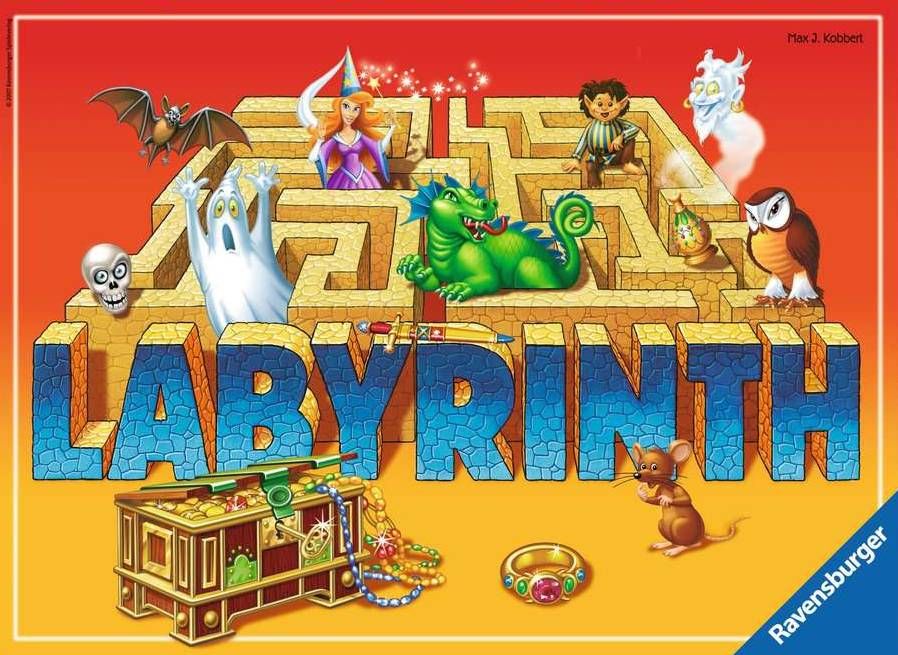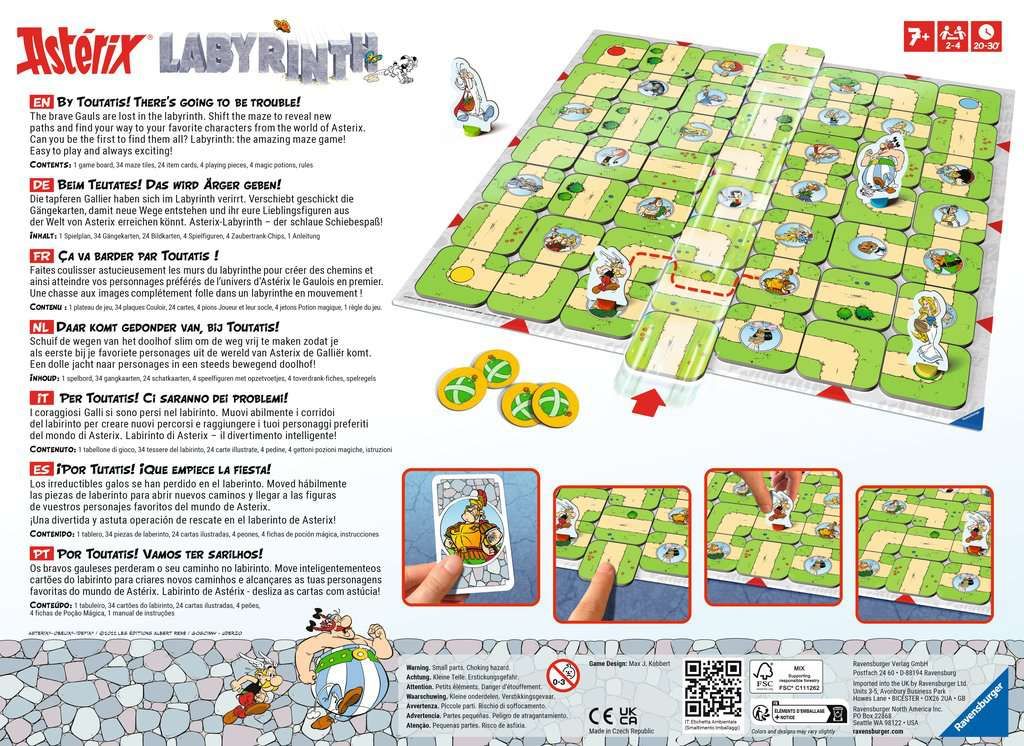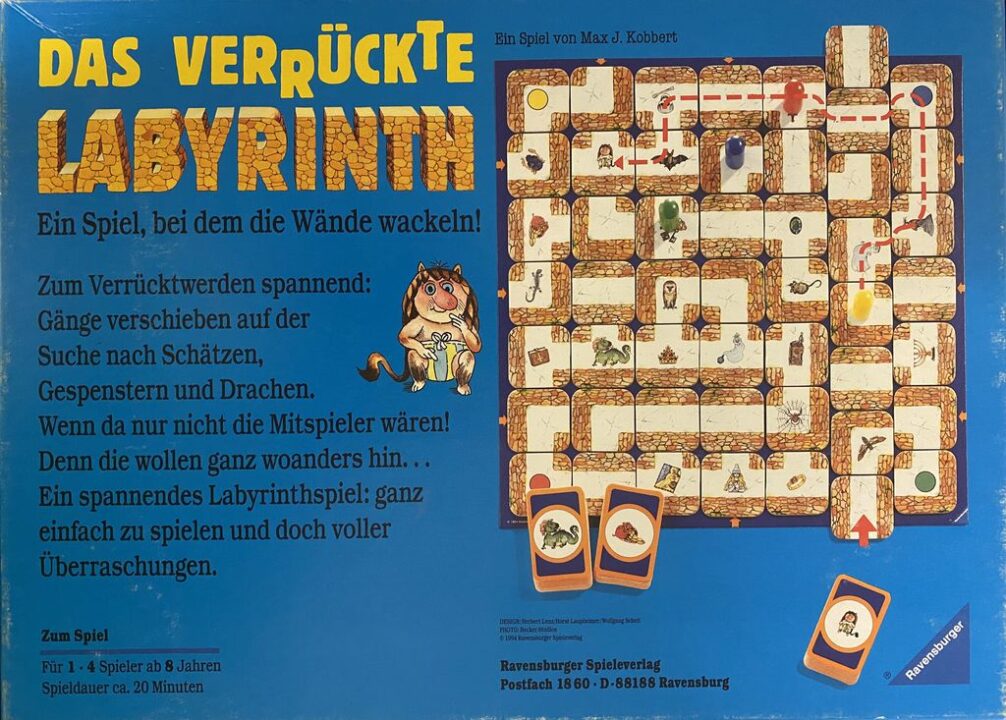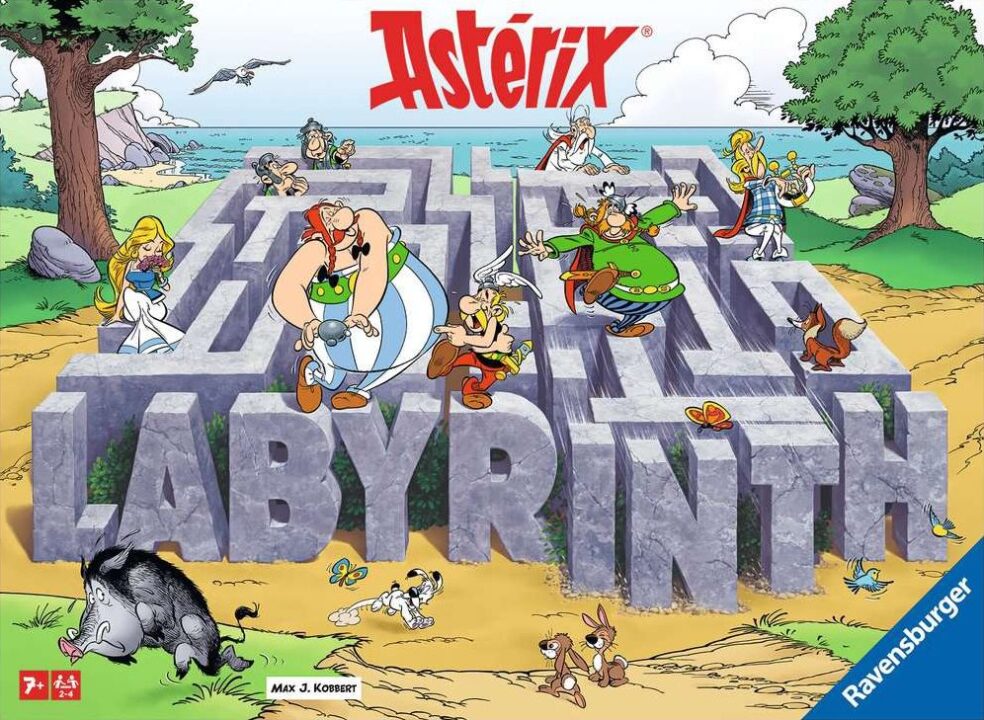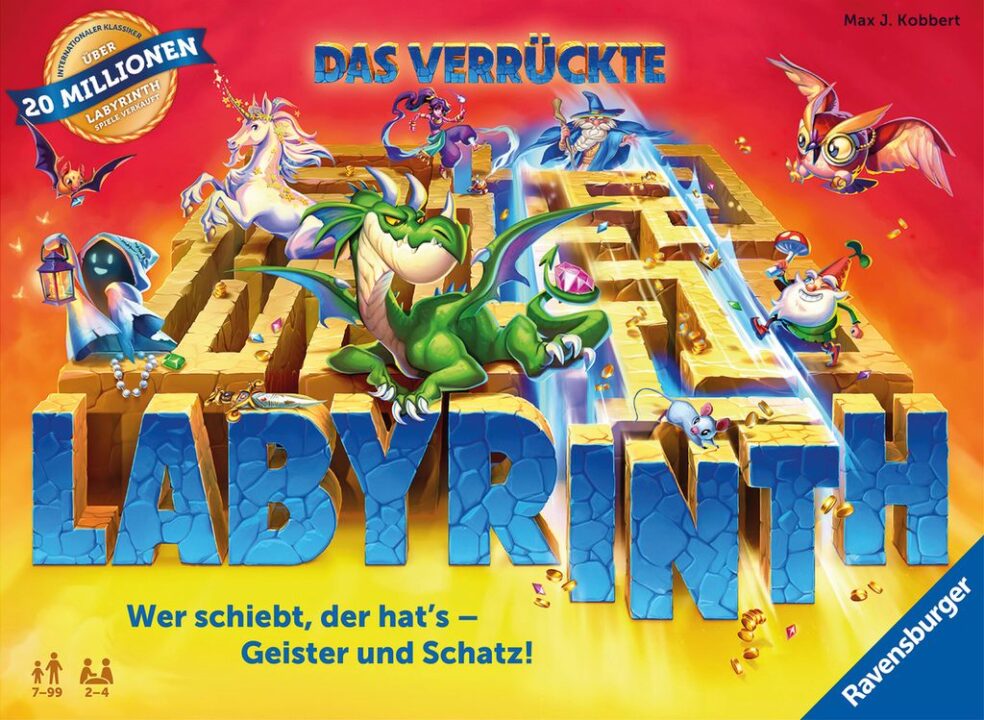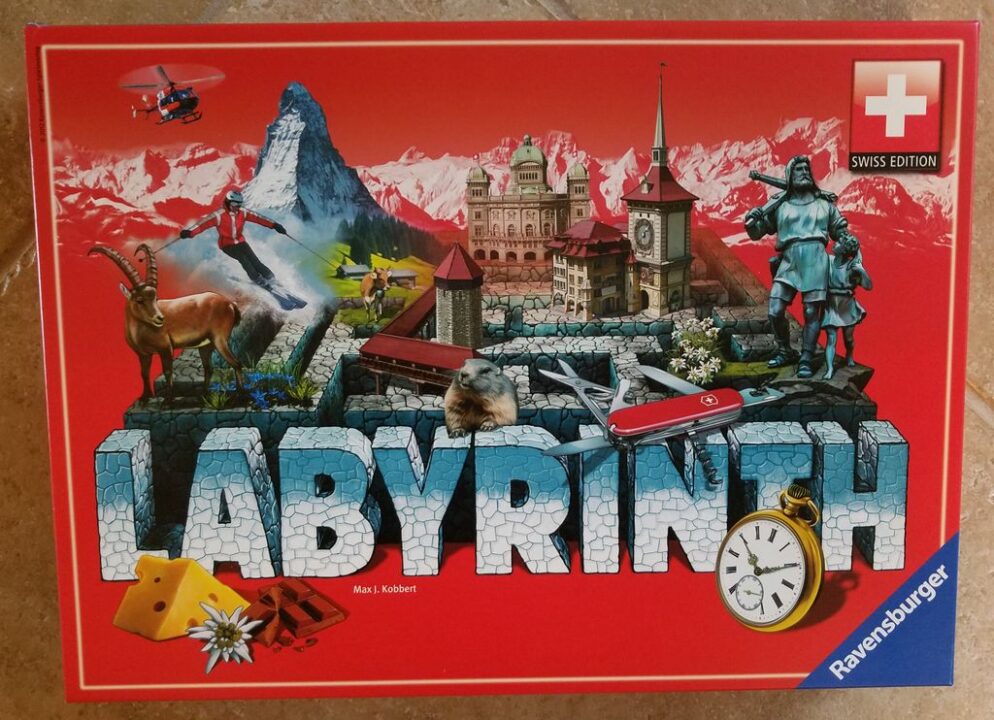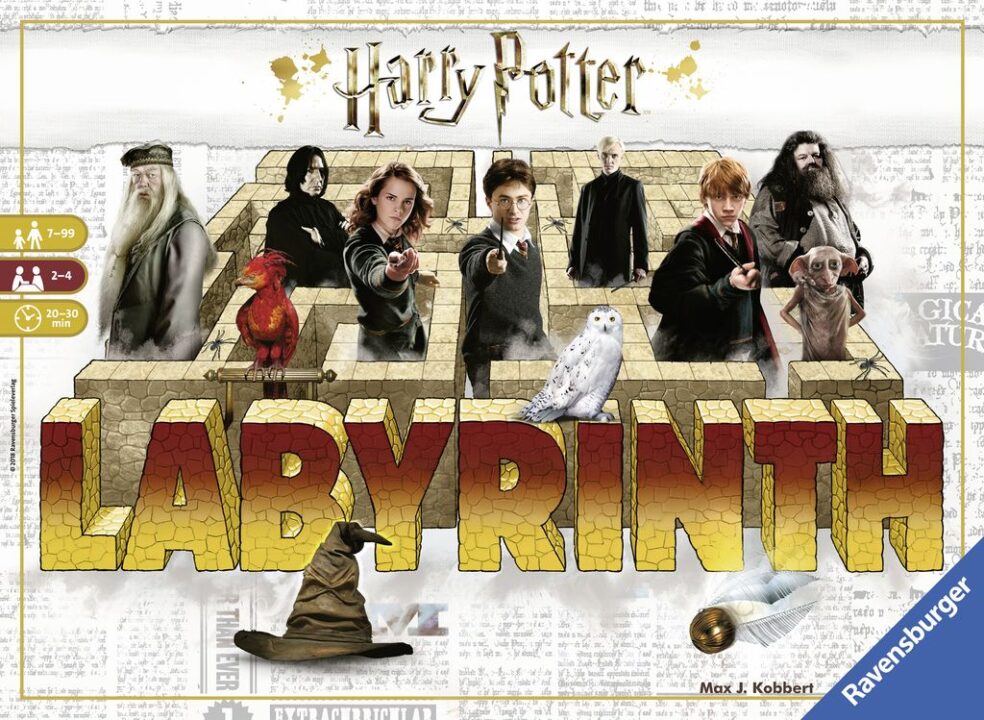Welcome folks! Today, I’m excited to review the timeless classic, Labyrinth. This game has a magical way of mixing strategy and randomness that makes every playthrough unique. From its dynamic board mechanics to its high replay value, it’s like a roller coaster ride with twists and turns you never see coming! But is it all fun and games, or does it spiral out of control? Let’s find out together.
How It Plays
Setting Up
Start by placing the game board on a flat surface. Shuffle the maze cards and randomly place them on the board, leaving one card aside. Each player picks a pawn and places it in their starting corner. Shuffle the treasure cards and deal them equally among players. The spare maze card becomes the shift card.
Gameplay
On each turn, players use the shift card to move rows or columns of the maze. This creates new paths or blocks existing ones. Then, players move their pawns along the open paths to collect treasures. The aim is to reach the treasure shown in your hand. Pay attention to your opponents’ moves; they might accidentally help you!
Winning the Game
The game ends when a player collects all their treasures and returns to their starting point. This player wins and gets the honor of being the maze master!
Want to know more? Read our extensive strategy guide for Labyrinth.
The Intricate Game Mechanics of Labyrinth
Ah, Labyrinth. A game that brings up childhood memories of trying to outsmart my cousin, who always managed to find the shortest path. The game mechanics of Labyrinth are simple yet elegant. Players take turns shifting rows of the maze to create new paths. The goal is to collect treasures scattered around the board, but the real fun comes from blocking your opponents and making their lives a little bit more complicated.
The board itself is dynamic. Each turn, players insert an extra tile on the edge of the board, pushing entire rows and columns. This means every game is different, and strategies must adapt on the fly. It’s like playing a puzzle that keeps changing! And let me tell you, there’s nothing more satisfying than watching your friend’s perfect plan crumble as you shift the maze just right.
What I love about the mechanics in Labyrinth is their balance between strategy and luck. Yes, you have to be a bit lucky with the tiles, but you also need to think ahead and anticipate your opponents’ moves. The game rewards both careful planning and adaptability.
On the downside, the randomness can sometimes tip the scales a bit too much for my liking. It’s frustrating when that one perfect tile you need just doesn’t show up. But hey, no game is perfect, right?
And that’s how Labyrinth strikes a beautiful balance between luck and skill. Speaking of balance, let’s talk about how well this game holds up over repeated plays. Stay tuned!
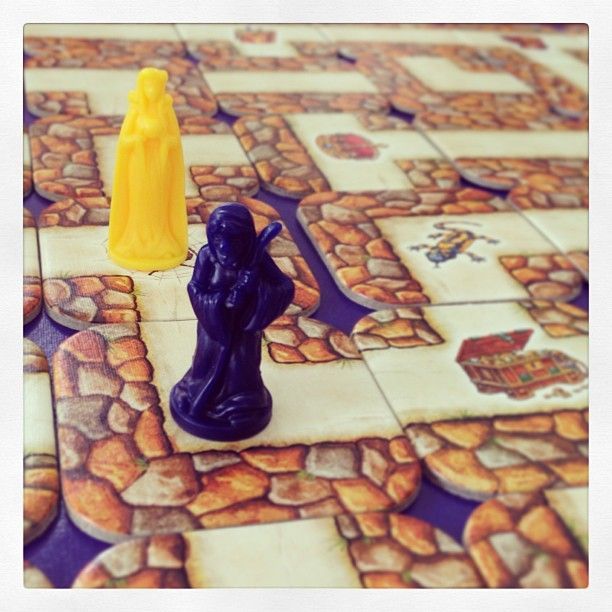
Replay Value: Fun Every Time?
Labyrinth is one of those games that manages to stay fresh, no matter how many times you play it. I’ve played it with friends, family, and even a grumpy neighbor who never likes anything—turns out, he liked this! The main reason for the high replay value is the constantly shifting maze. Each game feels like a new adventure, which is fantastic.
As you and your fellow players shift tiles to create new paths to treasures, no two games are ever alike. This game mechanic ensures that each playthrough offers a different experience, keeping you on your toes. The unpredictability keeps the game exciting, even after multiple plays. I swear, my cousin Todd and I have played this game more times than I’d like to admit, and we still find ourselves laughing and strategizing like it’s our first time.
Another thing that boosts replay value is the mix of strategy and luck. Without giving too much away, let’s just say the random element of tile drawing adds a layer of unpredictability that keeps things interesting. Sure, sometimes Lady Luck isn’t on your side, but a good strategy can still save the day.
The game also scales well with different player counts. Whether it’s just two of you or a full house of four, the game adapts nicely. Even with fewer players, the shifting tiles and strategic moves keep the game engaging.
In the next section, we’ll talk about the component quality because, let’s face it, nobody wants their treasure cards to look like they’ve been through a medieval dungeon.
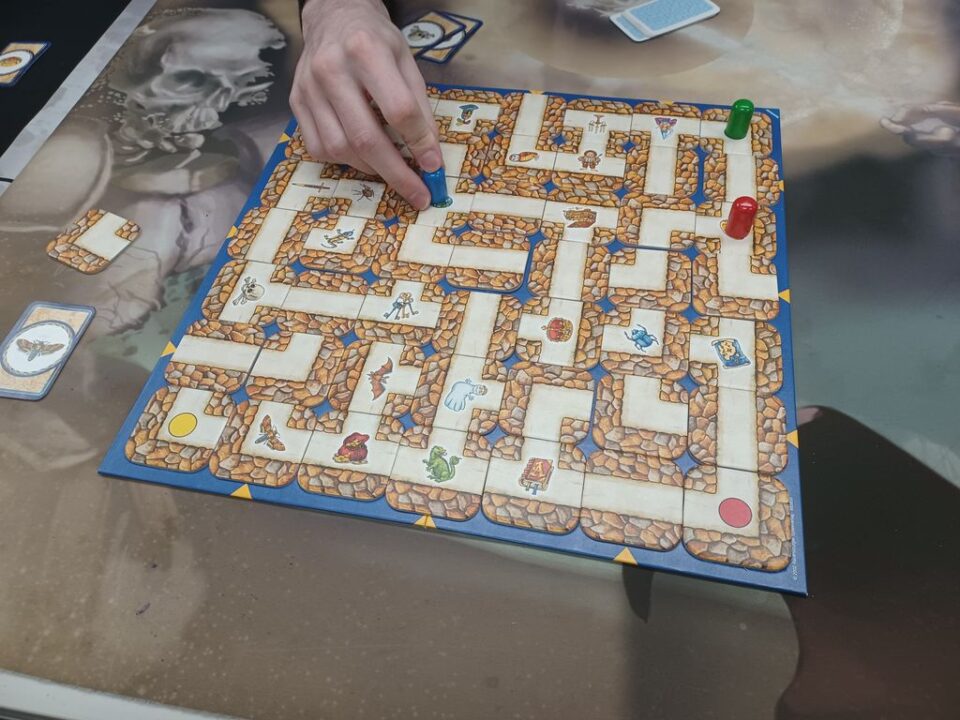
Component Quality of Labyrinth: A Tactile Treat
Let’s talk about the meat and potatoes of any board game—the components. Labyrinth delivers here in spades. The first thing you notice is the board itself. It’s chunky, sturdy, and feels like it could withstand the occasional flip from a frustrated sibling. And boy, have I tested that theory.
The tiles are thick cardboard pieces that slide around the board smoothly. They have a satisfying heft to them, making every move feel significant. The card illustrations are vibrant, capturing the whimsical fantasy theme perfectly. It’s almost like wandering through a tiny magical maze. My friend, Sam, commented once, ‘It’s like I’m guiding Indiana Jones through IKEA!’—and you know what? He’s not wrong.
The player tokens are simple but effective, and they stand out nicely on the board. They’re not overly detailed, but that’s a minor trade-off for their durability. Having dropped one in my coffee once (don’t ask), I can say from experience that they’re built to last.
Even the box insert is worth a mention. Everything has its own spot, making setup and takedown a breeze. Nothing worse than a board game box that looks like a grenade went off inside it, right? This is one well-organized labyrinth.
If I had to nitpick, I’d say the cards could be a tad bit thicker. After a few marathon sessions, they start showing signs of wear. But hey, that’s nothing a good set of card sleeves can’t fix.
Next up, let’s untangle the enigma of Labyrinth’s difficulty level. Hold onto your adventurer hats!

Difficulty Level in Labyrinth: Challenging Yet Accessible
Labyrinth, the classic board game, strikes a fine balance between being easy to learn and challenging to master. The rules are simple enough that you can explain them to a first-timer in less than five minutes. This makes it accessible for kids and adults alike. But don’t be fooled by its simplicity. The dynamic board and strategic elements can get quite intense.
The game starts deceptively easy, but as the shifting maze unfolds, players need to think on their feet. The difficulty ramps up as the maze becomes more complex, and players try to outmaneuver each other to collect treasures and reach goals. I’ve found myself scratching my head more than once, trying to figure out the best move.
What I appreciate most is how the game caters to different skill levels. Newbies can enjoy it without feeling overwhelmed, while veteran players can still find enough depth to stay engaged. I’ve played it with my nephew, who is just getting the hang of strategic thinking, and with my pals, who are seasoned board game enthusiasts. Both groups had a blast, but for different reasons.
However, it’s worth mentioning that if you’re looking for a game with zero randomness, Labyrinth might not be your cup of tea. The shifting maze introduces an element of unpredictability that some hardcore strategists might find irksome. But hey, a little chaos can make things more interesting, right?
So, do I recommend Labyrinth? Absolutely. It’s a versatile game that you can enjoy with almost anyone, offering a fun mix of strategy and unpredictability. Just be prepared for a few brain-bending moments along the way.
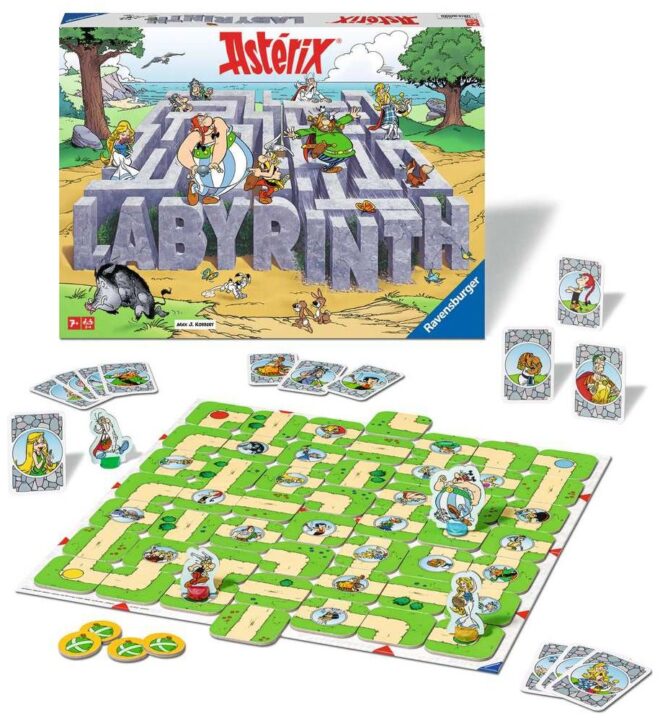
Conclusion
Wrapping up the review, Labyrinth impresses with its dynamic board, unique strategy, and colorful components. While randomness adds a bit of chaos, it balances skill and luck quite well. Its high replay value and approachable difficulty make it a great choice for all ages. So, should you give it a go? Absolutely! Grab your friends, get lost in the maze, and enjoy the adventure!

